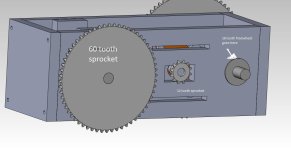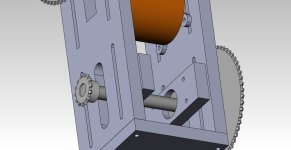I've been lurking these forums for a good 6 months ever since I wanted to start my e-bike project. Originally I wanted to motorize a mountain board, but I decided that it would be a poor option for commuting to school and I didn't want a car. So now I wanted to motorize my bike. I live in a pretty hilly area and decided a crank drive would be the best setup for me.
I wanted to save a bit of money and am using a Turnigy 250kv 63-54 motor, the gold one, along with a 6S 150A Hobbyking car esc. I will be using a two-stage reduction, taking that 6250 rpm and turning it into about 97ish rpm at the cranks through a 12-60 compounded with a 14-60 and finally a 16 to 48. The 48 tooth being the final one on the cranks. I already bought the freewheel equipment from sick bike parts. I have yet to mount the entire thing, but I wanted to know...
Has anyone else done a three-chainring setup at the cranks?
And is 90-100 rpm a good absolute TOP speed?
I don't see too many threads on crank-drive builds, only advice about general crank-drives. And I really wanted to know if that crank rpm is best for efficiency.
Thanks!
I wanted to save a bit of money and am using a Turnigy 250kv 63-54 motor, the gold one, along with a 6S 150A Hobbyking car esc. I will be using a two-stage reduction, taking that 6250 rpm and turning it into about 97ish rpm at the cranks through a 12-60 compounded with a 14-60 and finally a 16 to 48. The 48 tooth being the final one on the cranks. I already bought the freewheel equipment from sick bike parts. I have yet to mount the entire thing, but I wanted to know...
Has anyone else done a three-chainring setup at the cranks?
And is 90-100 rpm a good absolute TOP speed?
I don't see too many threads on crank-drive builds, only advice about general crank-drives. And I really wanted to know if that crank rpm is best for efficiency.
Thanks!














